overview
It's all about the water…
Rainbird is a leader in irrigation products and services. They provide irrigation products and services in consumer, commercial, and agricultural industries. They were building a new application to provide water management for large scale farming operations.
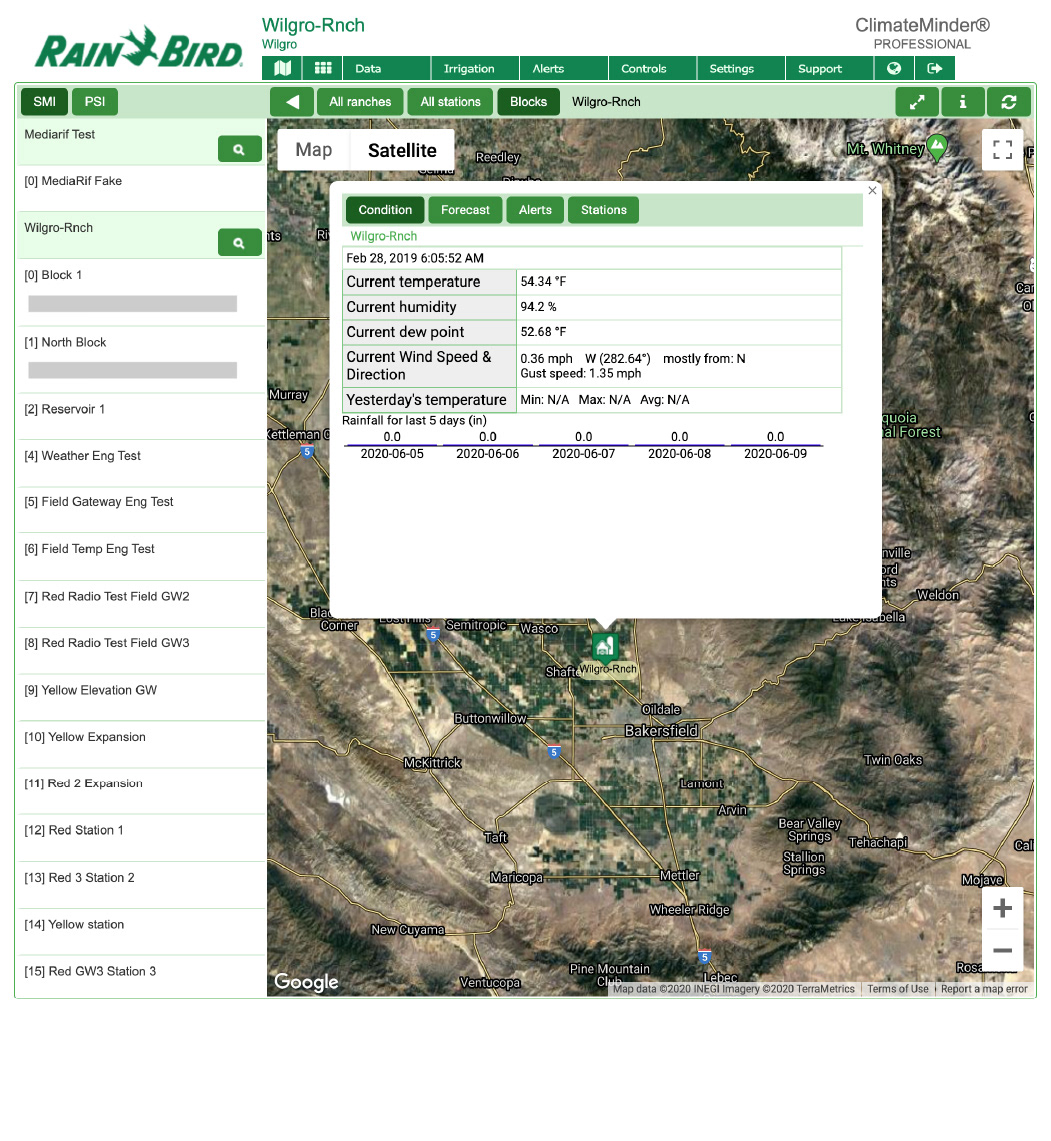
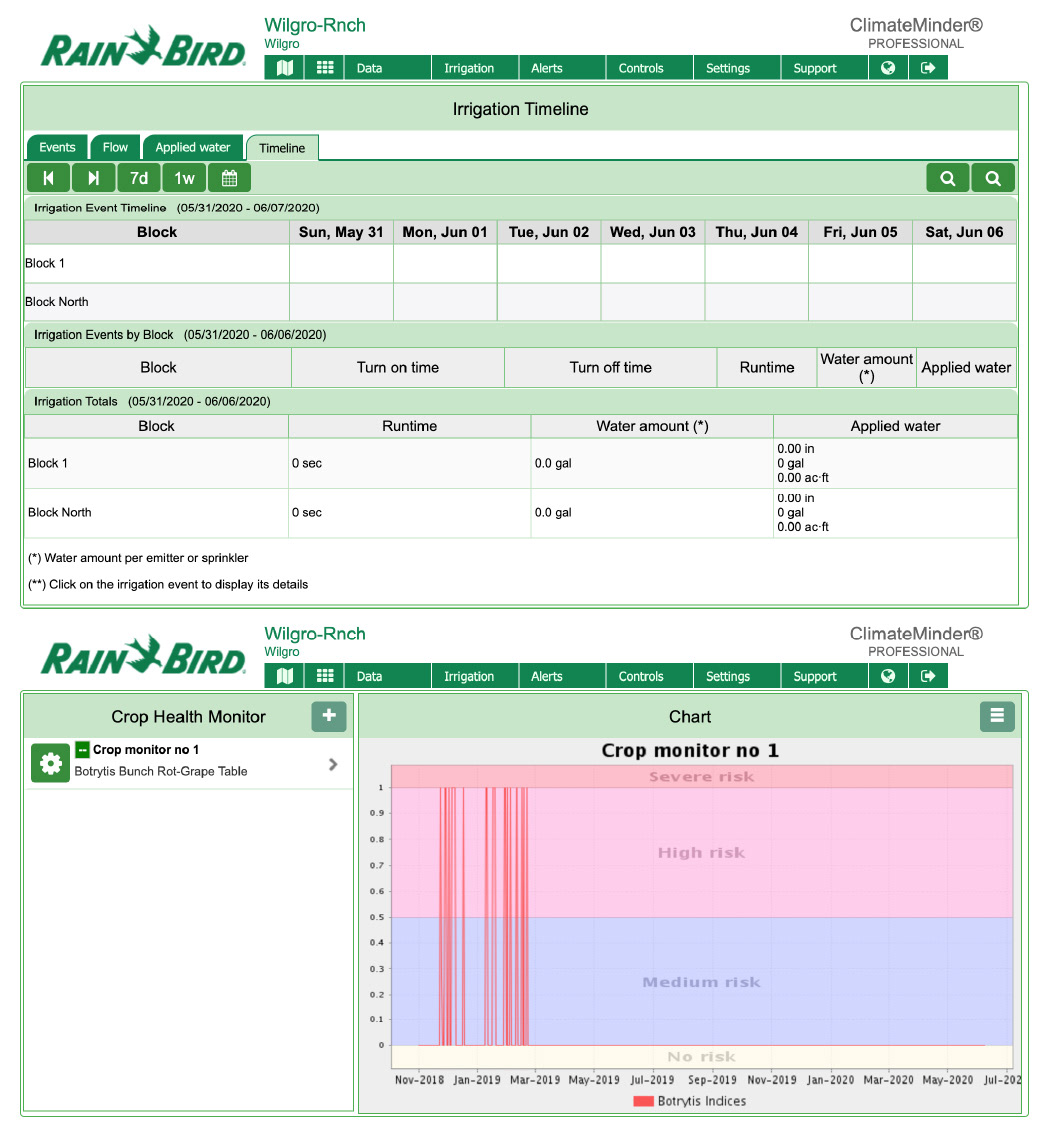
The old system was overloaded with tables and data with no way to tell what's important.
the problem
Build a system that easily scales to the needs of every farm
Rainbird's commercial irrigation product was going to retire because 3G cell towers were shutting down. They wanted to leverage this shutdown to reimagine how their software was architected. The goal was to create a new, more streamlined product that allows users to adjust water usage to match the needs of the crops to avoid costly overwatering.
user Personas
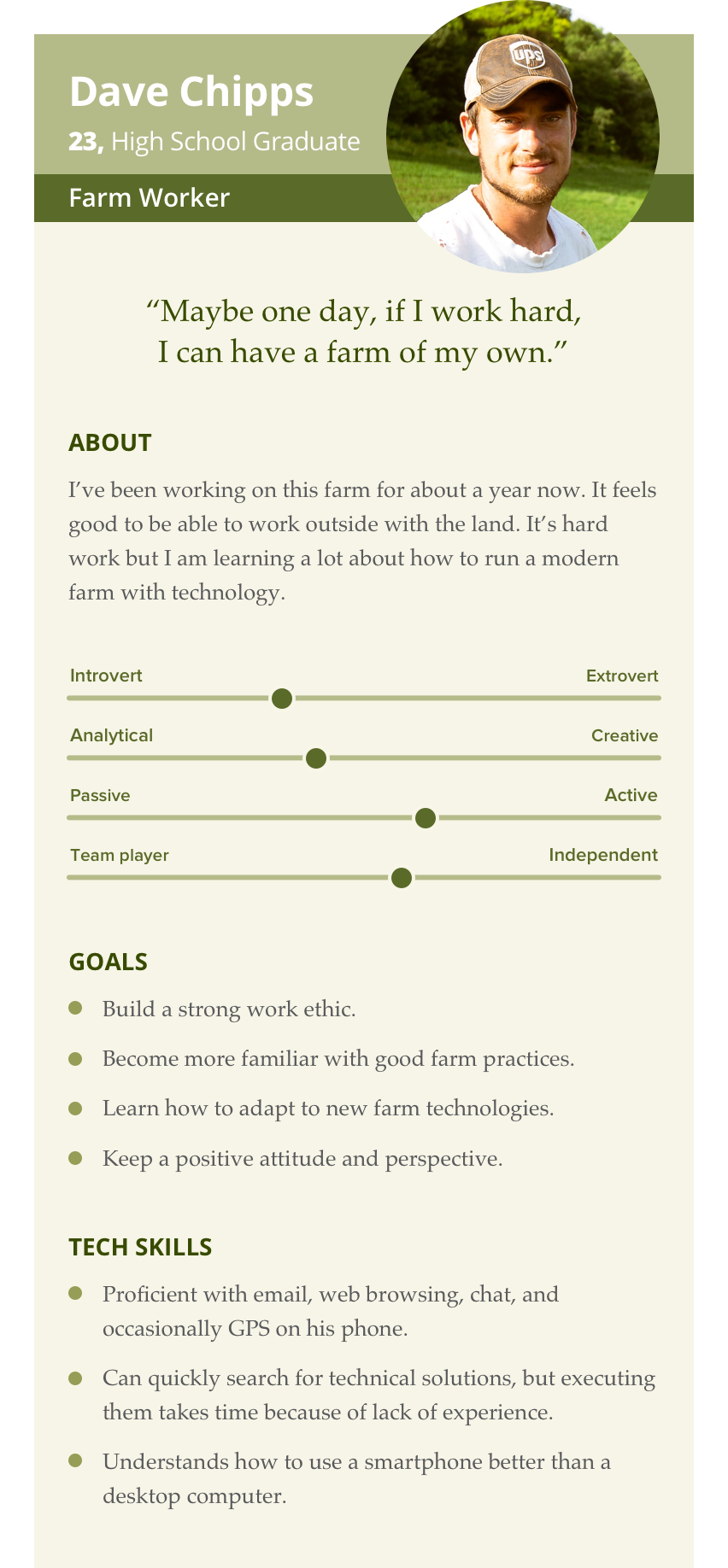
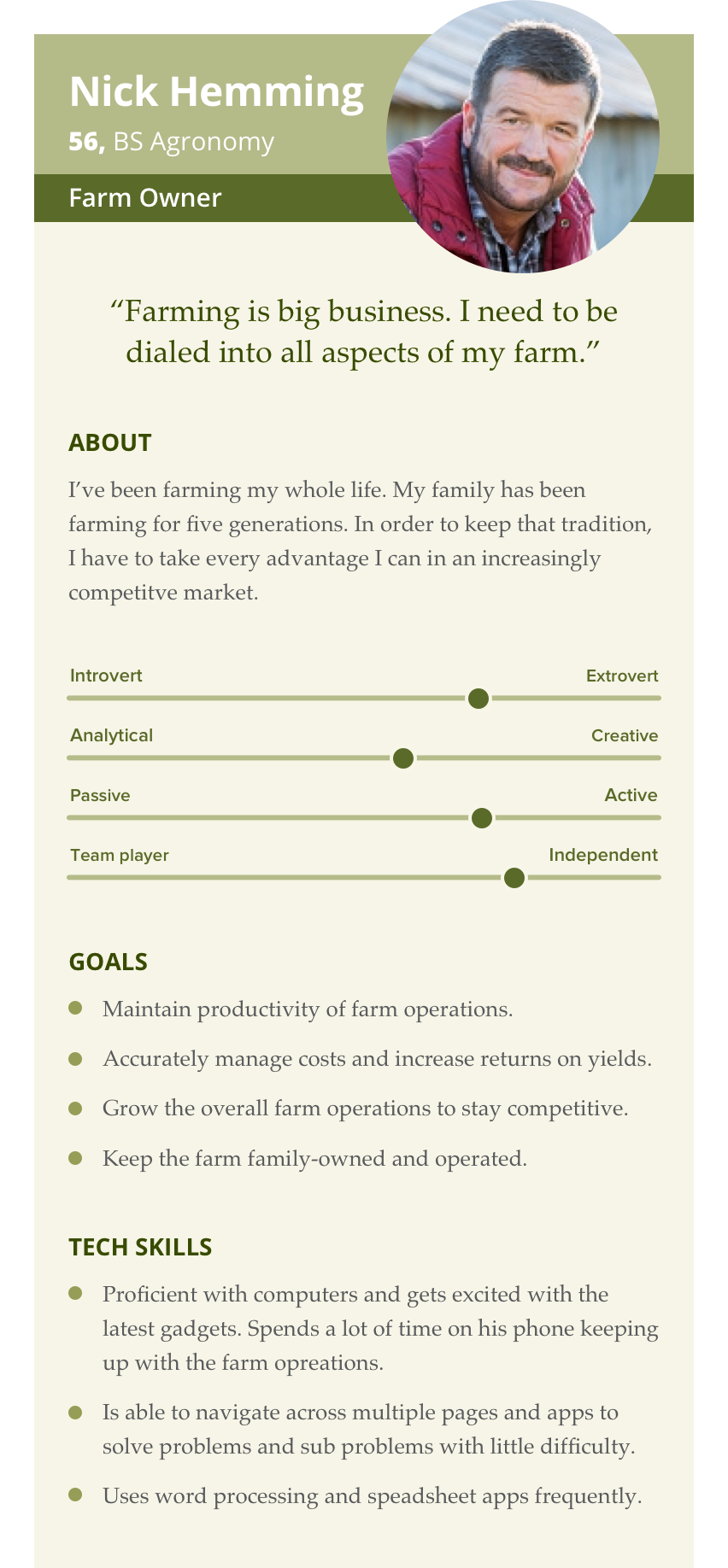
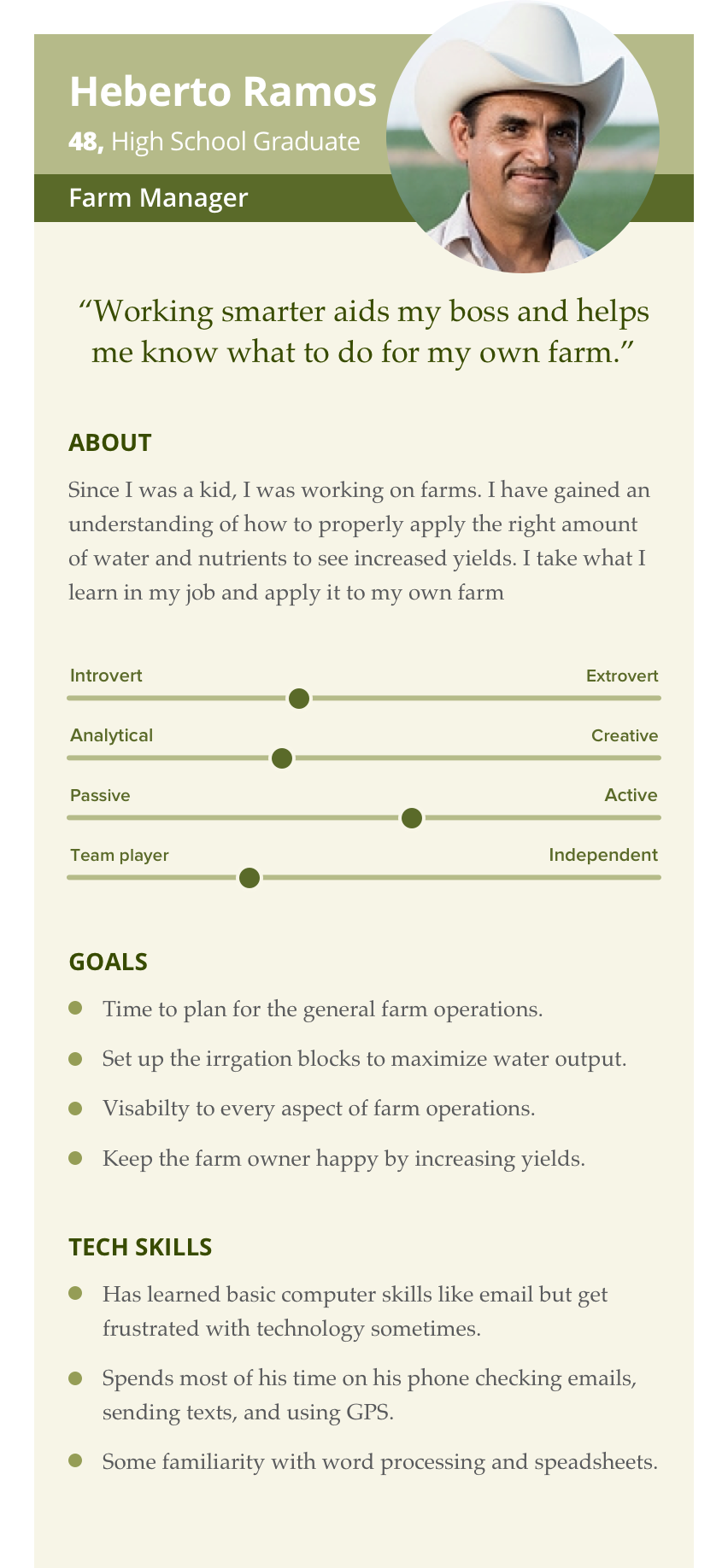
My role
I was hired by an agency to create the user experience for the new application based on recommendations by the client. I worked very closely with the agency's CTO and Rainbird's product team. We had a remote team here in the US consisting of three Rainbird employees, two agency representatives, and three contractors; a backend architect, a hardware developer, and myself. There was also another remote team of about 16 developers, QAs, and analysts working out of various locations in South America.
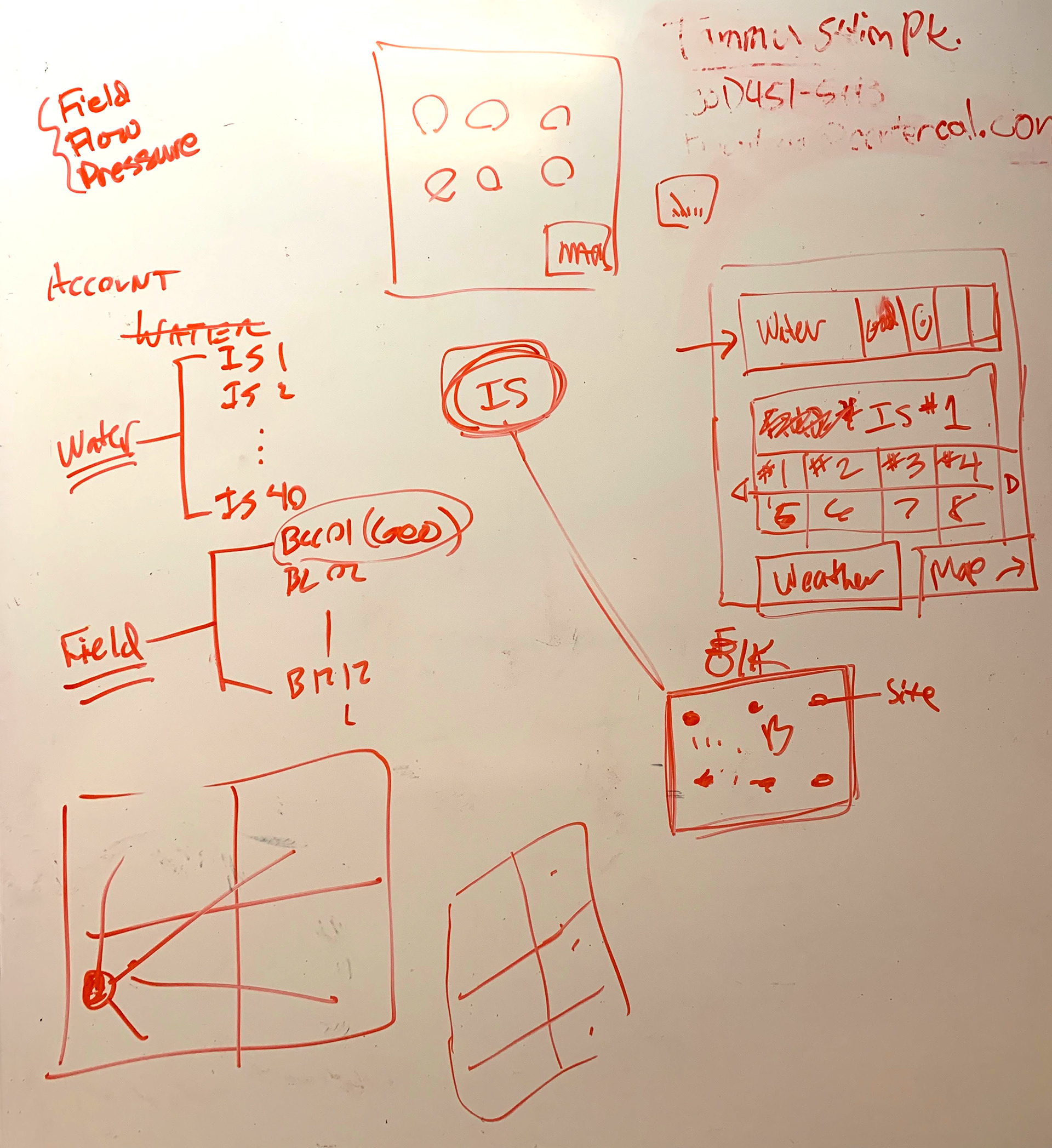
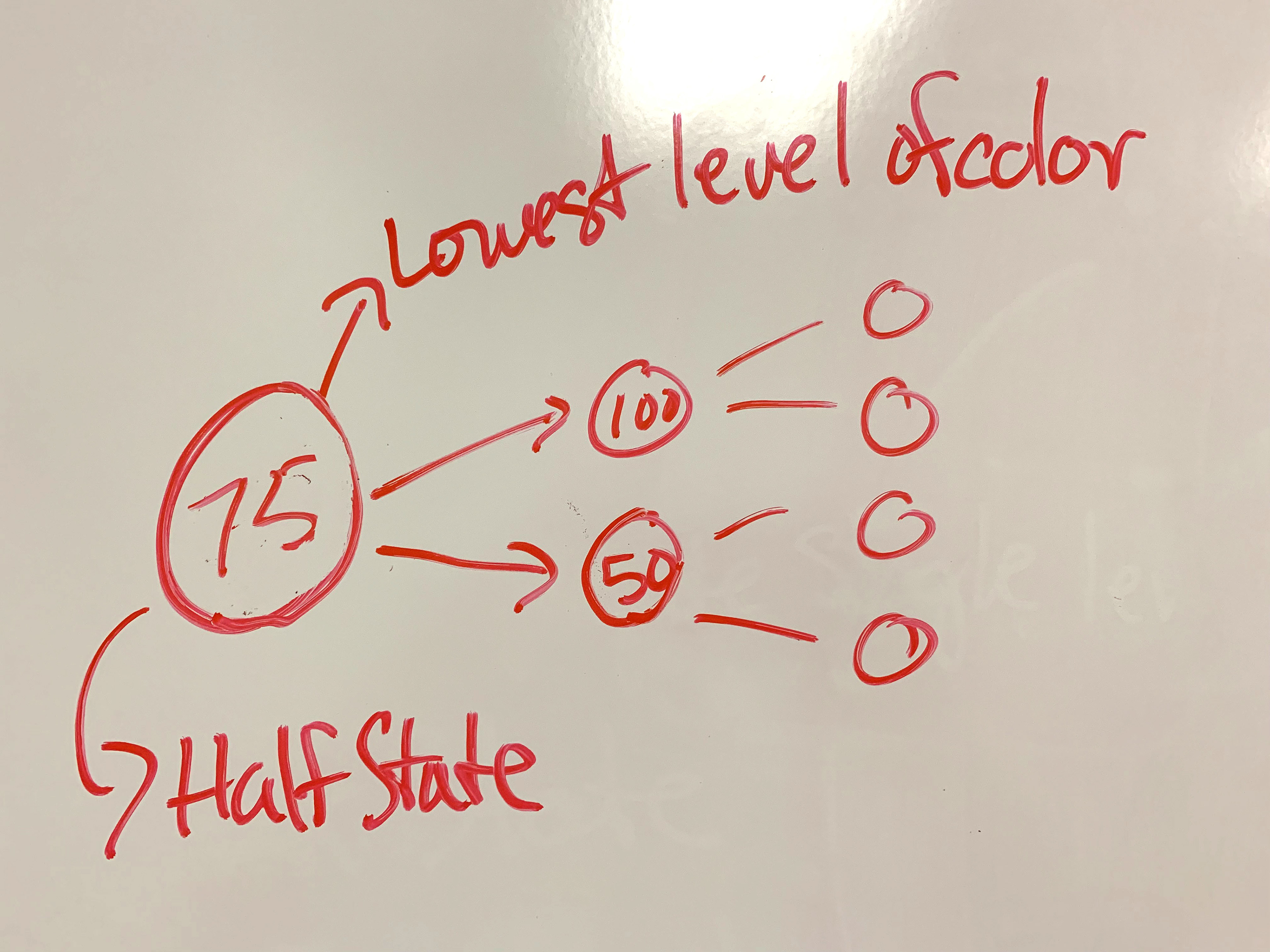
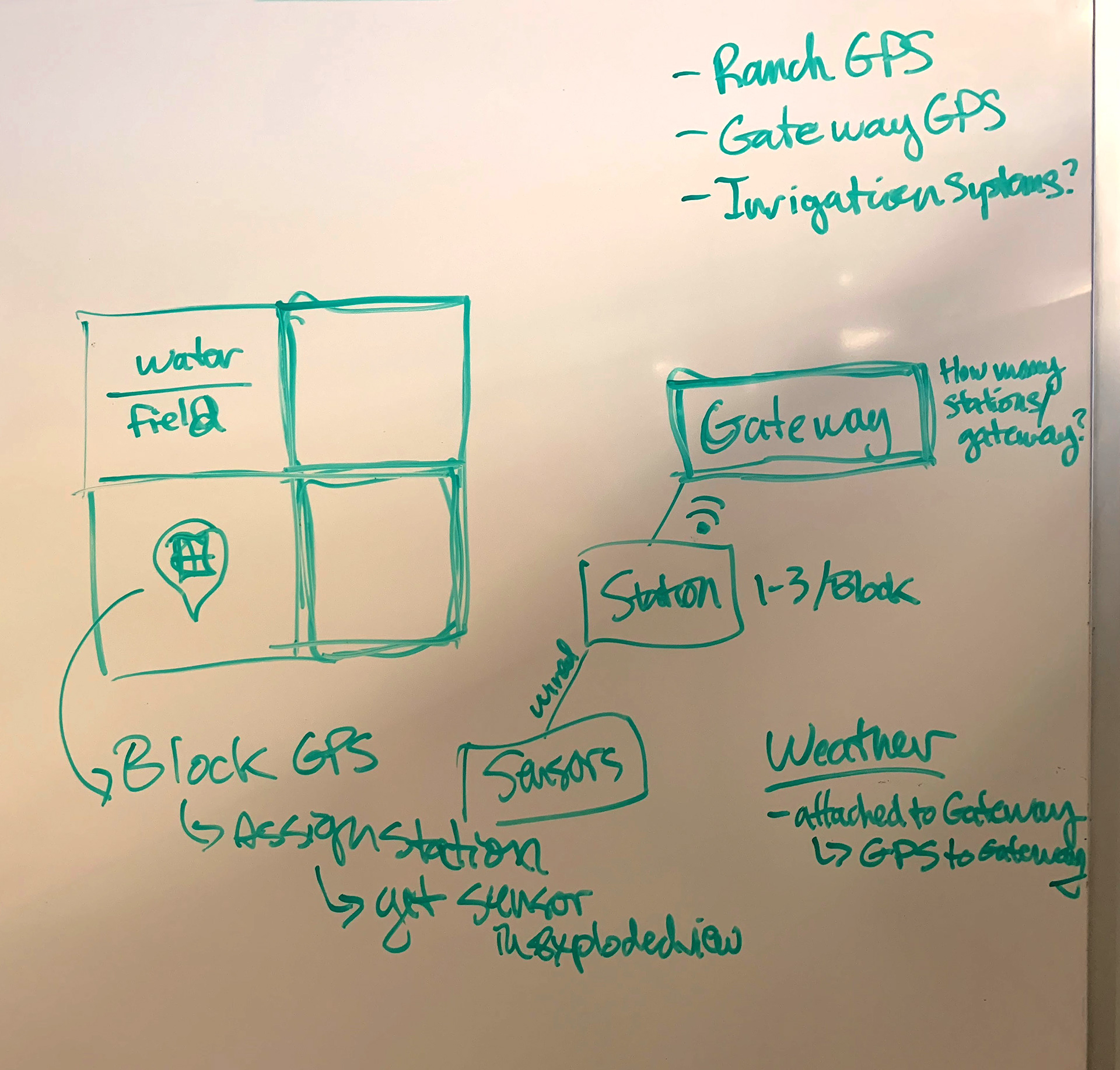
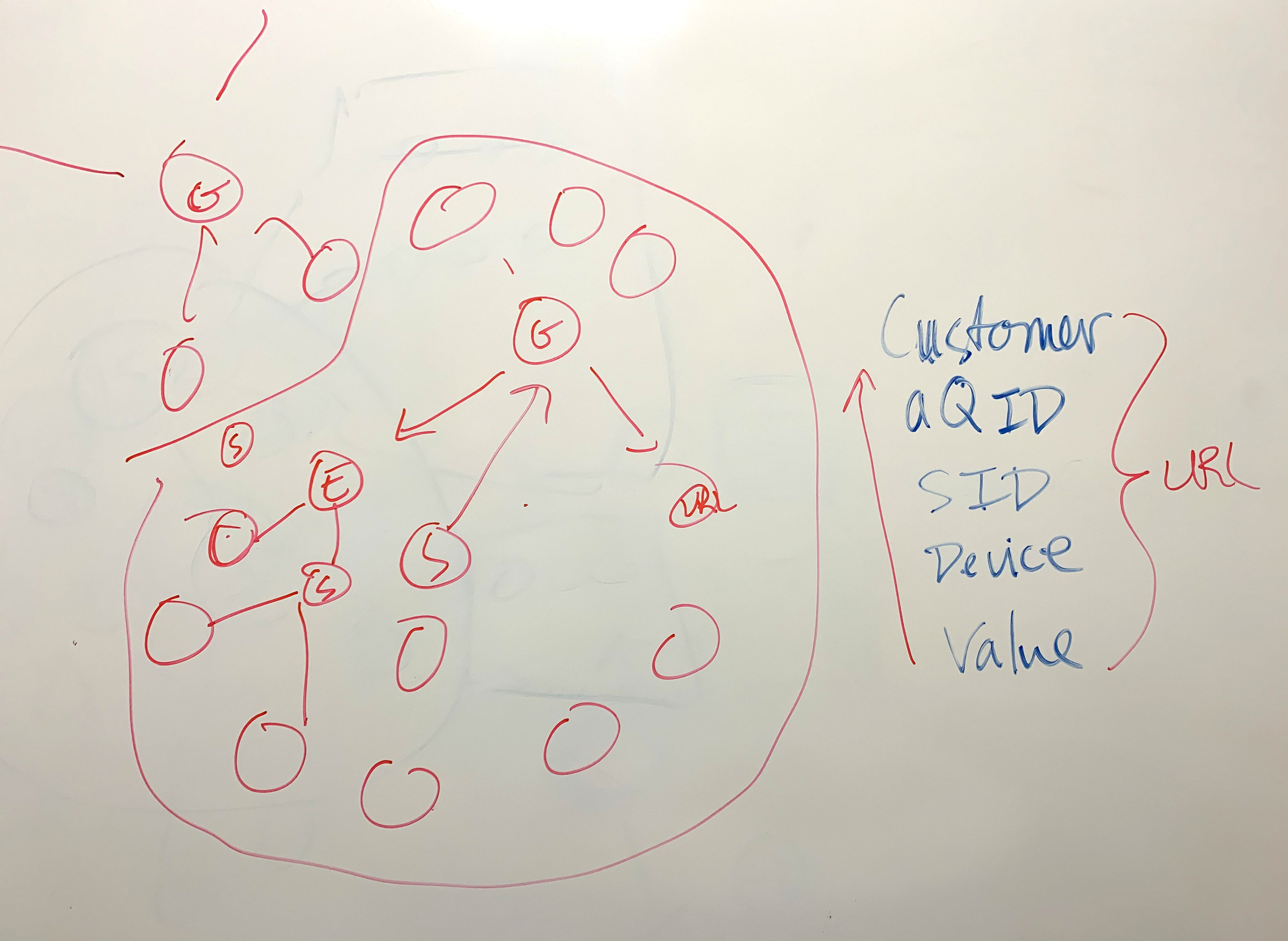
Whiteboard results from a two-day working session and multiple virtual meetings.
Design process
The team was completely remote but after the first couple of conversations, it became clear that we would need to put together a design working session with the CTO of the agency and the Rainbird product manager for a couple of days in person to whiteboard all the major movements of the app. This was critical to an understanding of the requirements for the app.
While brainstorming with the product team, we came up with the idea of showing the farms on a map with markers indicating the health of the irrigation systems in a geographic area. As you zoom further into the map, more markers show for the separate irrigation systems with more specific health data. Once you clicked the marker, you can view the health of the irrigation system and adjust the water flow for each system.
In order to speed up design decisions and aid in implementation, I decided to base the design system on Google material design for Angular. This helped minimize the assets needed for the front end development team.
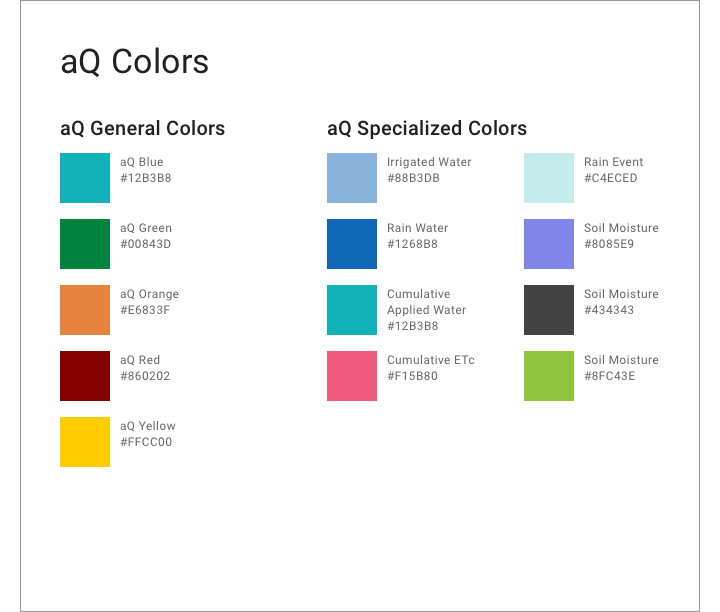
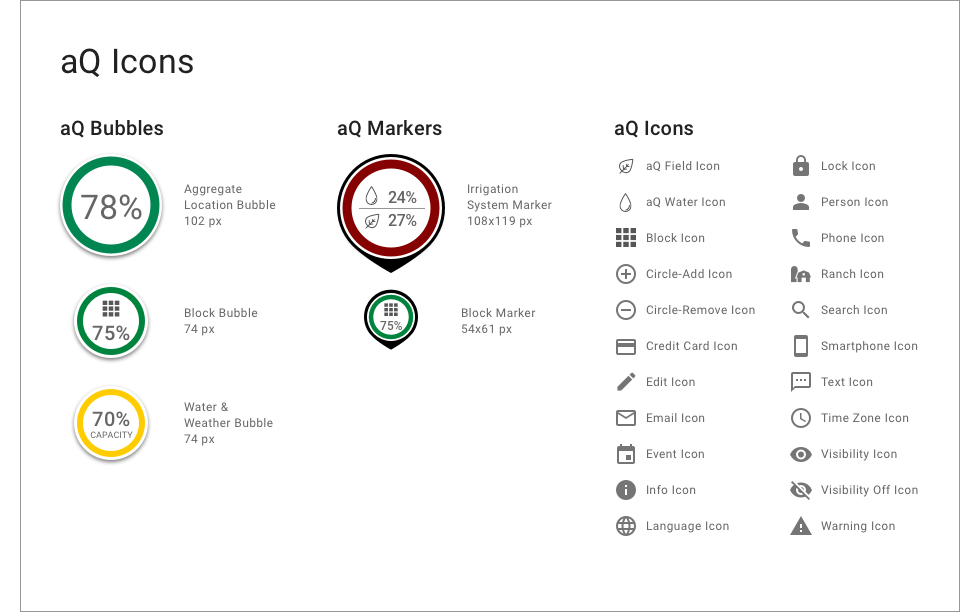
I generated a simple style guide for product marketing to help with maintaining the visual identity when the product launched.
Due to time constraints, the client decided to forgo user testing for the initial MVP with the goal to conduct retrospective user feedback. Because I grew up in southern Idaho working on large farms, I had some understanding and empathy for the user, which helped me better understand what the user needs. Occasionally, I would show prototypes to my farmer father-in-law. He provided good feedback and wished he was using the tool on his farm.
"Who knew moving sprinkler pipe as a kid in Idaho would be helpful designing software…"
As we moved into development, I aided the analyst and helped groom the backlog so the development team could move forward. Unfortunately, the product ran into several budgets and timeline issues during development. The Rainbird executive team eventually shelved the product before it was ready to release.

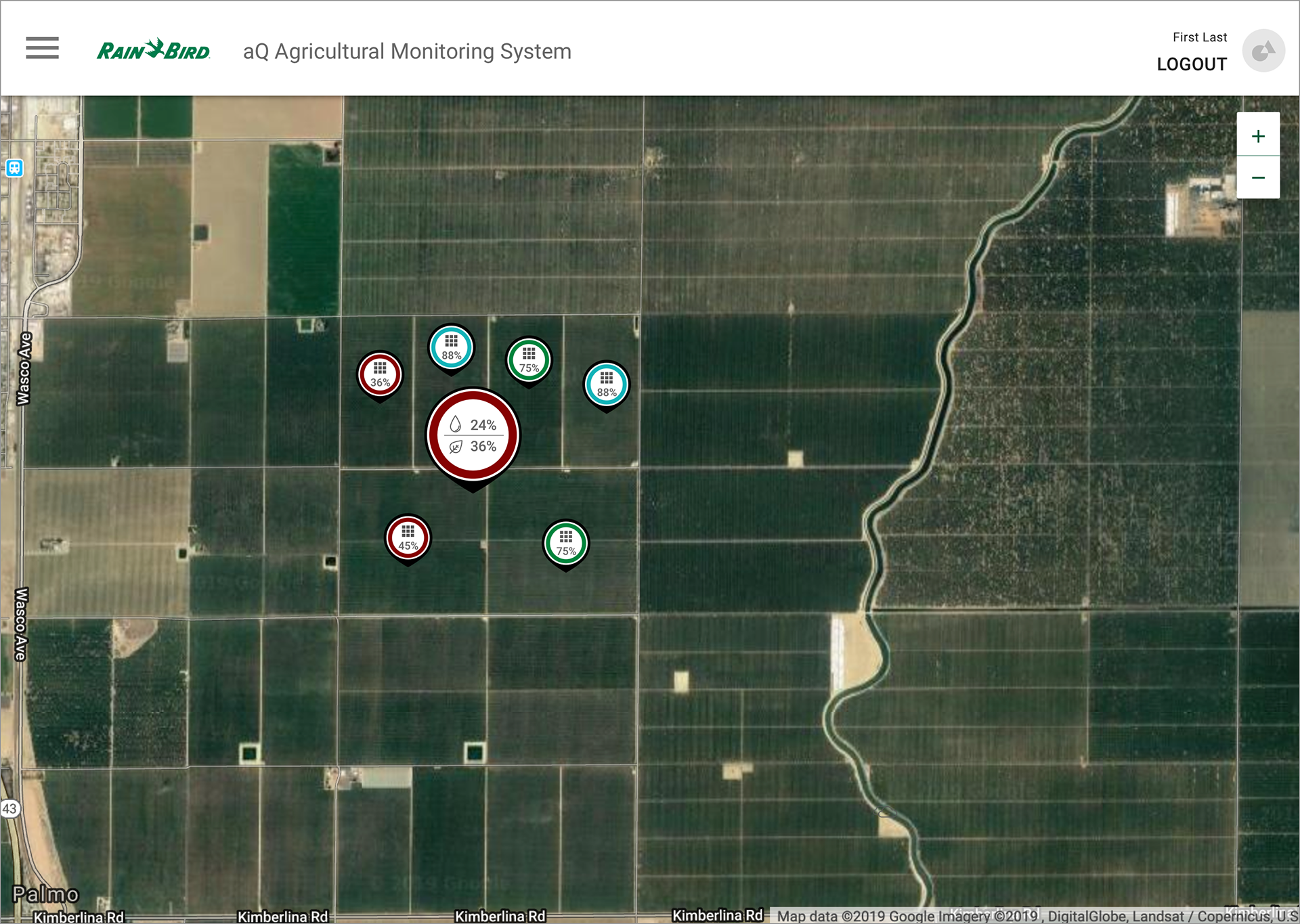
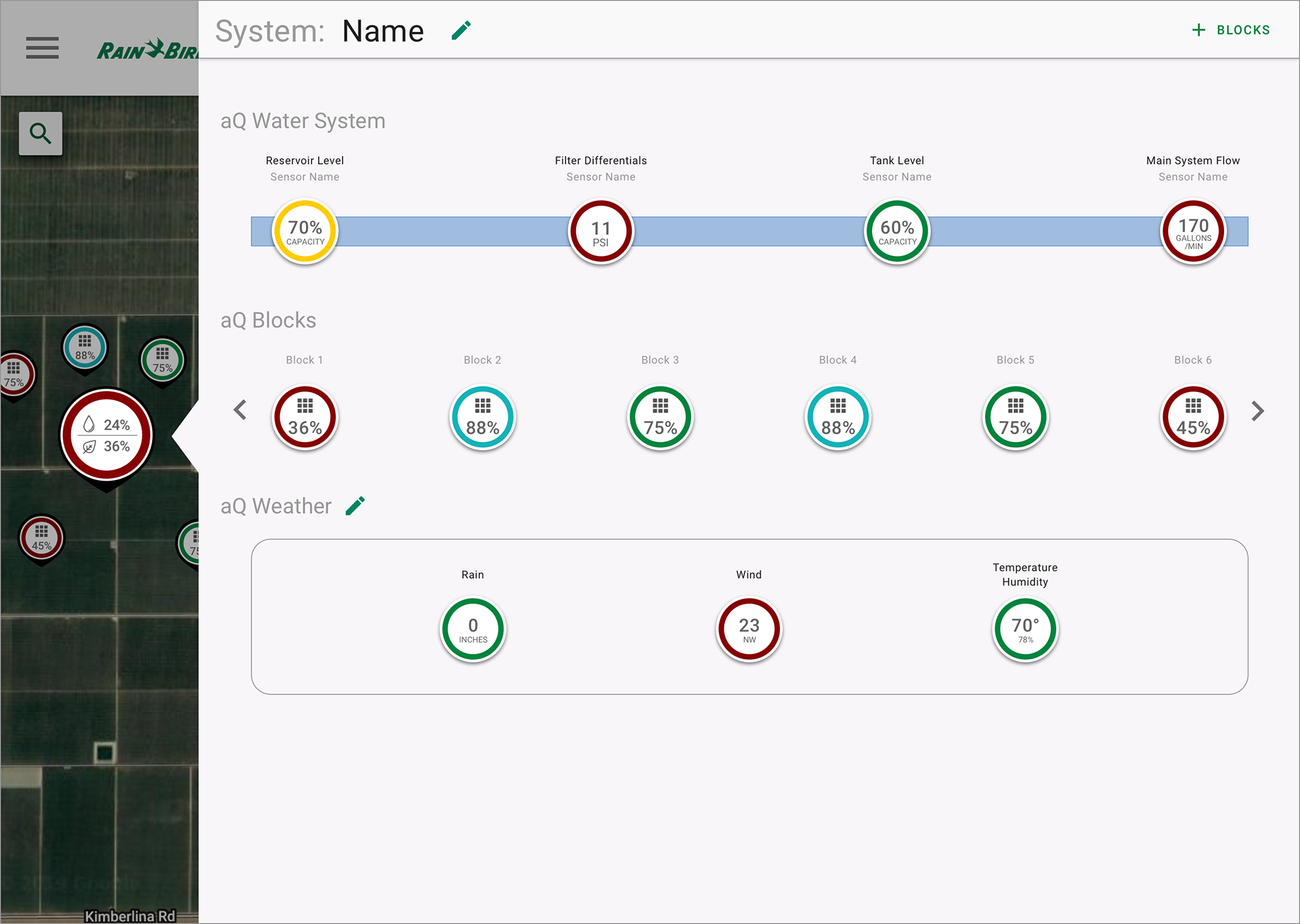
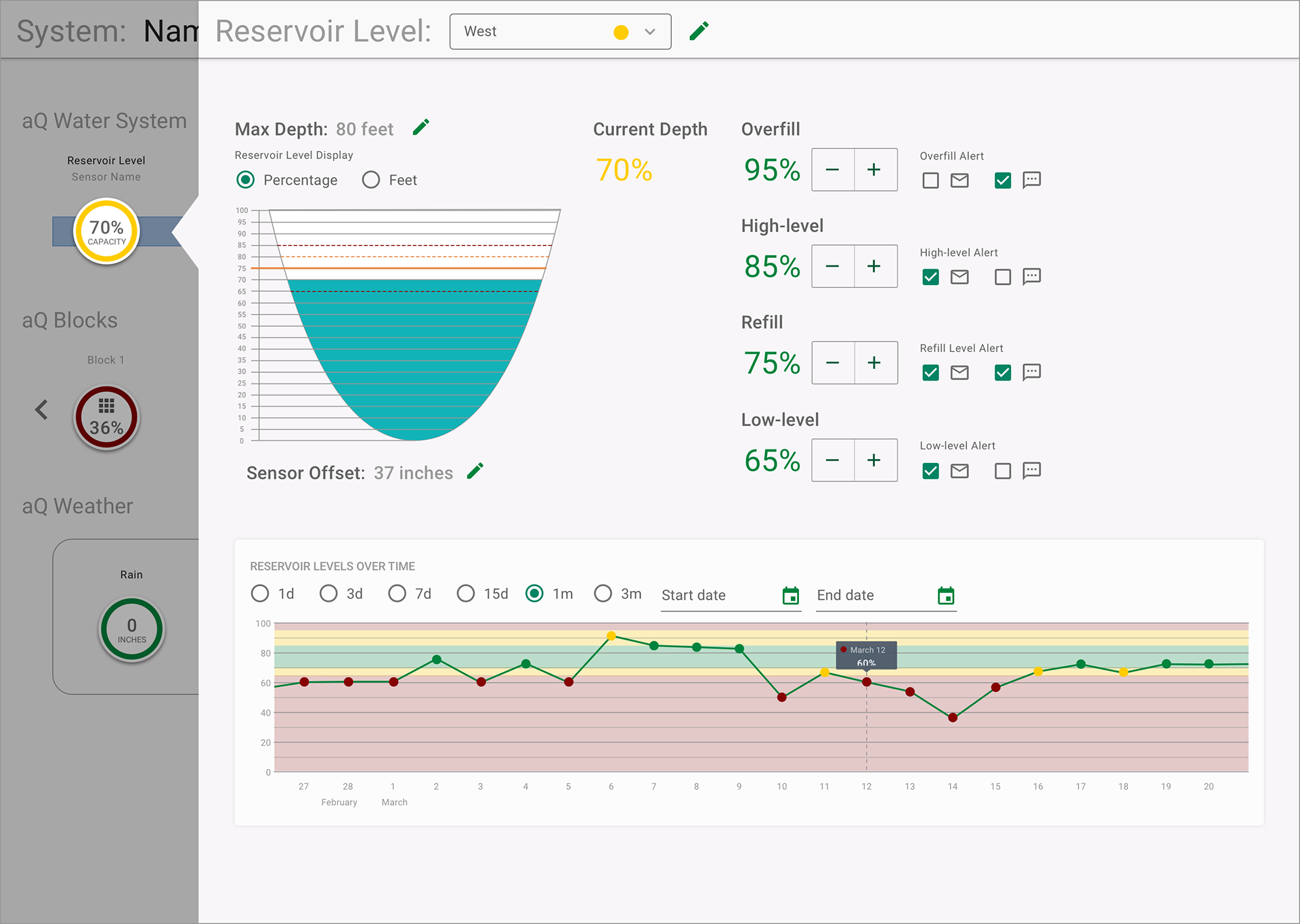
The new app shifted from a rigid hardware-based system to an infinitely scalable software-based system.
conclusion
I was happily surprised to work on a product that leaned on my past growing up in a farm community. One of my key takeaways was using material design to help speed up design decisions and development handoff. Another key learning despite the benefits of working remotely, there are moments where you need to get stakeholders together in a room to work out solutions. Currently, the product is on hold due to budget issues. Hopefully, it will be picked up again and released.